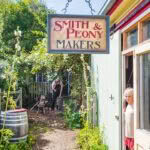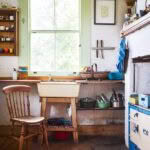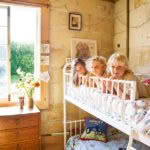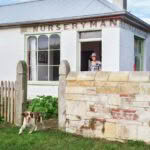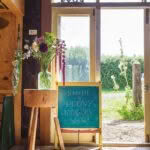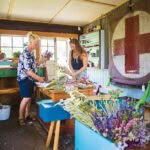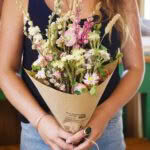The makers of Kakanui: How this Otago craftsman and his clan are reviving the art of handmade goods
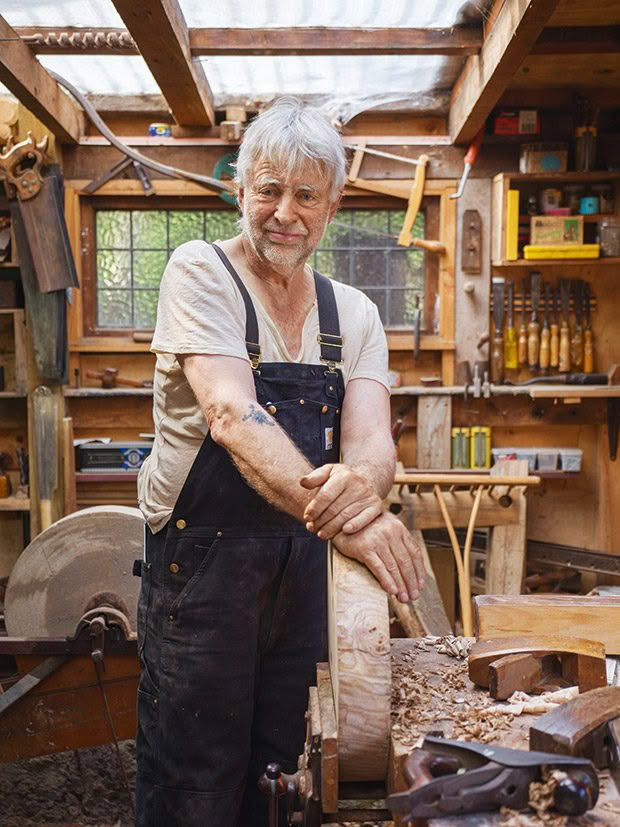
Lindsay built his woodworking shop in the 1990s and spends at least a few hours a day working there.
A craftsman working in stone, iron and wood channels his Celtic forebears and takes his time to make everything look just so.
Words: Nathalie Brown Photos: Rachael McKenna
“Everything here is a one-off piece,” Lindsay Murray says, sweeping his arm to take in the work of the various artisans in Smith & Peony, the shop he runs with his partner Laura McKnight. “No two items are the same.”
Murray’s is not a souvenir shop or a gift shop but an artisans’ outlet that sells handcrafted works: bespoke, quirky and eclectic. The items here are destined to become family heirlooms. Prices range from $45 to $2000-odd.
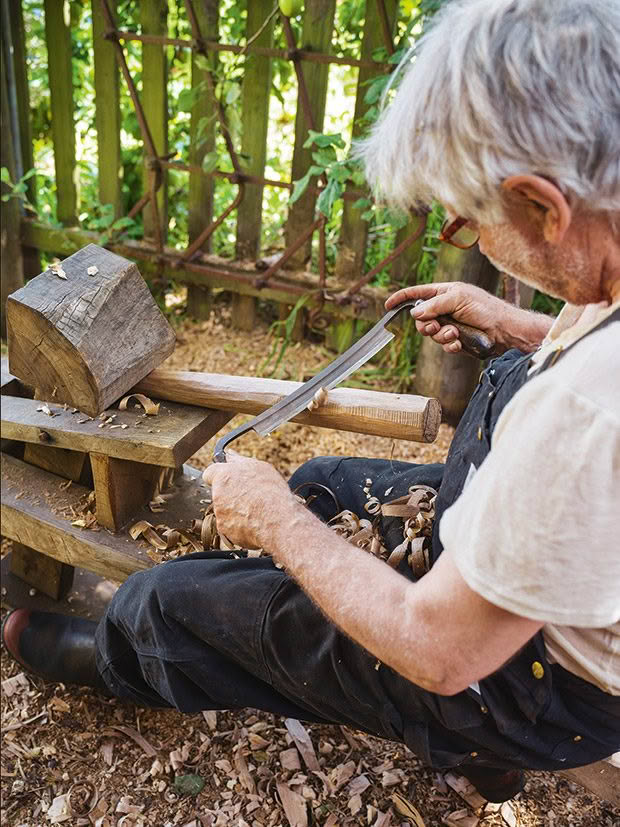
The shaving horse is an essential piece of equipment. Lindsay straddles it while using a draw knife to fine-tune a peg leg.
Lindsay, Laura and their two children, Matilda (8), also known as Tilly, and Farley McKnight (4), live at Kakanui, a seaside village 15 minutes south of Ōamaru. The children are McKnights because, Laura says with a grin, with most of Lindsay’s first family living in the small town, there are enough Murrays in Kakanui.
Home for the Murray McKnights is an 1874 stone cottage. Lindsay has lived here for 22 years and in the village for 45 years. Over the years, successive owners have added to the cottage’s original three rooms, and there are several outhouses. One of these is a primitive forge and woodworking shop; another is the shop. Its name, Smith & Peony, refers to Lindsay’s ironmongery artefacts (smith), and the hydrangeas, lilies, roses and peonies Laura grows to sell as cut flowers.
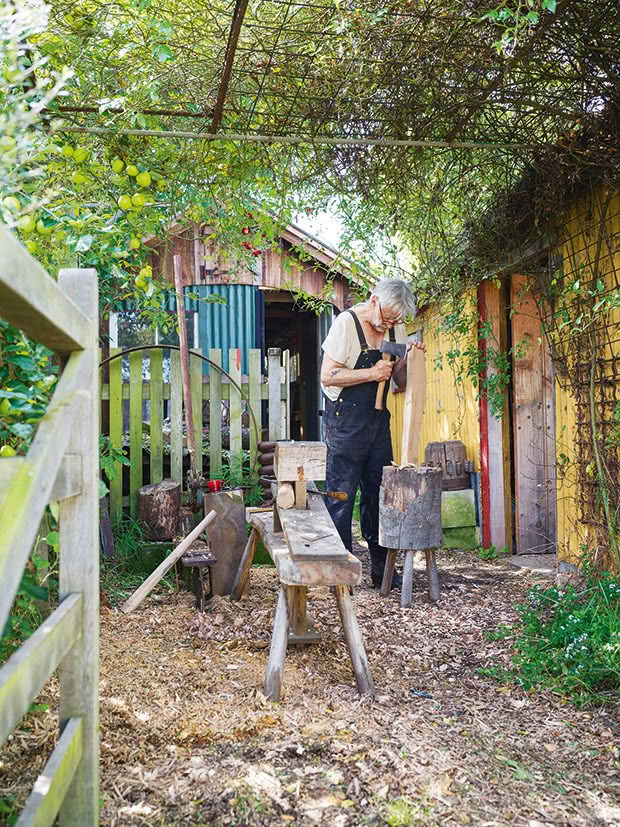
Lindsay roughs out a peg leg with a hatchet.
Most of the items for sale in the shop are designed for use in a home or garden. And while other Kakanui makers have placed their wares here, most have been made by Lindsay, who has a penchant for medieval and Scandinavian styles with an emphasis on work made with planes, axes and adzes. His Celtic forebears used these techniques, learning their skills from their Viking lineage — shared by every true Celt, Lindsay says.
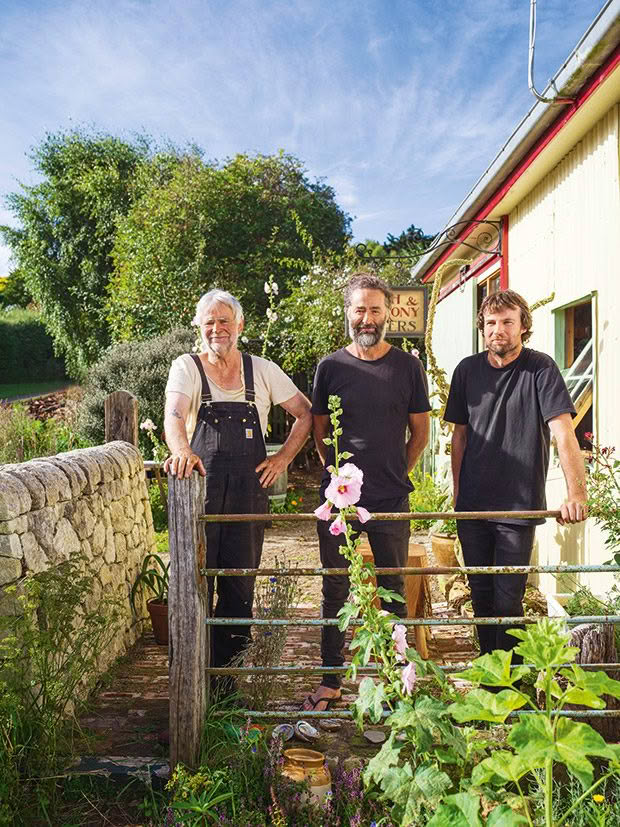
The Murray men: Lindsay and his sons Will, a builder and knife-maker (centre), and Francis, an arborist who sources timber for Lindsay’s artefacts. The dry stone wall was built by a local stonemason, Alan Ward.
He makes peg leg seats and garden chairs, replicas of medieval butchers’ and kitchen blocks and their contemporary equivalents, coffee tables, and pot plant stands from rings of elmwood. There are chopping boards and cutlery boxes with handles made from kauri. There are large, traditional birdhouses and dovecotes two storeys high. The hand-hewn table, stool and chair legs are made on a shaving horse with a drawknife, the same method used by bodgers, such as Kakanui’s Bill Blair, whose wares are also in the shop.
Iron locks, hinges, hasps, colonial and more primitive candlesticks, weathervanes and Viking camp equipment such as tripods for hanging pots over an open fire are made in the backyard forge. Lindsay also makes black iron weathervanes, primarily copies of 16th to 18th-century ones — very primitive and large.
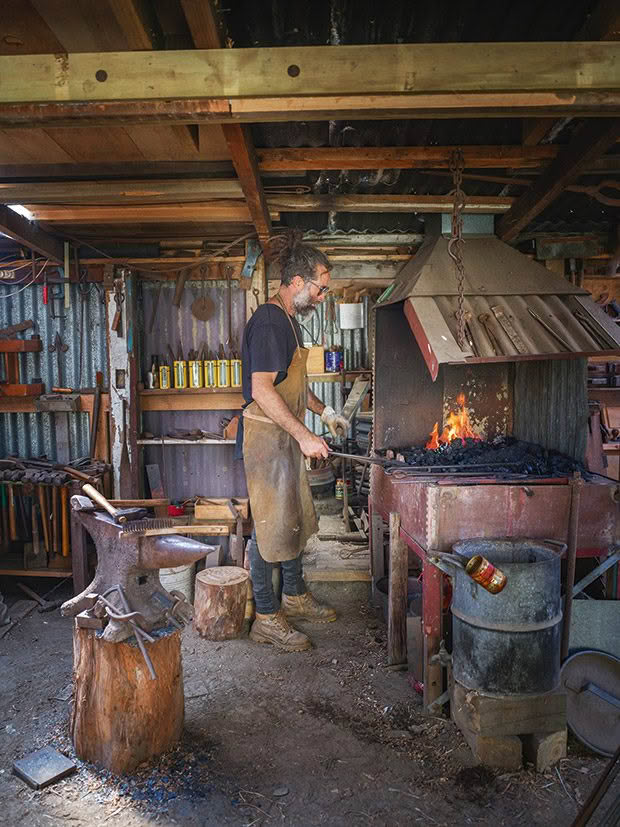
Will works the bellows in the coal forge in his father’s yard.
“This is my full-time work besides cooking when Laura is working. She’s a primary school teacher,” he says. “I love cooking, but I’m in the forge or workshop often. And when I’m not, I’m always working out processes in my head. I work slowly because I like everything to look natural.”
The Breton canvas fishers’ smocks he makes pull on over anything you’re wearing. The buttons are on the inside, so the fishing lines don’t catch on them, and they keep out the wind and water. “I bought one in Brittany and used it as a pattern,” Lindsay says.
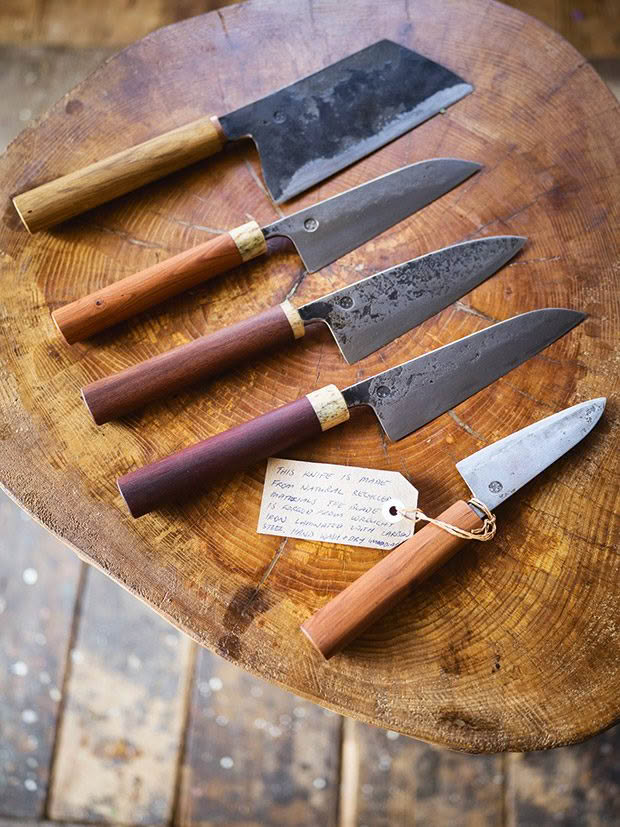
A selection of artefacts made by Will – a laminated steel cleaver with four kitchen knives.
“They are made from the material I scored when the Duntroon school — up the Waitaki Valley — went modern and got rid of their large canvas tents. I bought them and gave the canvas and the pattern from the original smock to Jill Renton at Graves Saddlery in Ōamaru. She cuts out the pieces and sews them, along with the canvas woodwork and gardeners’ aprons we sell here in the shop. I have acres of canvas, so we’ll have enough to do us for a good while.”
For his medieval-style items, Lindsay makes a finishes from organic linseed oil and traditional pigments in methods dating back to early Egyptian times.
- The gallery sign above daughter Tilly (8) was painted by Ōamaru artist Watts Davies.
- Laura and Lindsay still use the old enamel coal range — mainly as a pizza oven these days.
- Spot the auntie in this giggle of gorgeous girls — (from left) Francis’ daughter Nico (6), Jess and Will’s daughter, Ivy (3), and Tilly.
- Laura watches from the front door as springer spaniel Angus makes a break for it. The Murray-McKnight home was originally built for George Packwood, a Scottish nurseryman who came to Aotearoa in 1874.
“It’s very durable,” he says. “As is the milk paint I make from skim milk soured with vinegar or lemon juice until it curdles. You strain off the whey and use the curds mixed with dry pigments such as iron oxide, which is just rust, or clay pigment and a bit of slaked lime.
“These colours are wonderfully earthy and rich. You can’t replicate them in paint shops. You have to make it in small batches because it goes off. I use natural beeswax, tree turpentine, and linseed oil when I’m finishing things. We sell these medieval-style products in the maker’s shop.”

Laura is a teacher and a remarkably productive gardener. Her fruit and vegetable plots provide a lot of the family’s food, while her flower beds are fast becoming the basis of a profitable small business.
Lindsay points out that he is not necessarily a purist.
“I sometimes use a suitable acrylic test pot.” Why do it? What’s the pleasure in making these items by hand? “I would go mad if I didn’t. It’s a drive, a command outside of me. If I didn’t follow that creative urge, I would go insane. Part of it is driven by my ancestry and what they did. Until I was 15, I spent all my school holidays on my grandfather’s farm, and he did similar things. I have some of his tools here. His father was a miner, a carpenter and a blacksmiths.
- Laura McKnight’s arrangement sits atop one of Lindsay Murray’s peg-leg kitchen chopping blocks.
- Jess Smart sells textiles in the gallery and helps Laura with the flower side of the business.
- When peonies, hydrangeas, lilies and roses are out of season, Laura sells dried flower arrangements.
“In the 1880s, my great uncles were blacksmiths. I grew up doing that and reading books. Some years ago, I worked as a self-taught boat builder. I’m a self-published poet, and I plan to write poetry again when my body wears out.”
KNIVES OF STEEL
When Will Murray returned to New Zealand after his OE 11 years ago, his father Lindsay saw that his adult son was at a loose end and suggested Will consider making artisan knives because he had shown an interest in his younger years.
Will, a builder, makes hand-forged kitchen knives in his spare time from recycled materials. He collects car springs and old blades from sawmills, sometimes laminating their carbon steel with wrought iron for added strength. Wrought iron, he reckons, has a wonderfully aesthetic grain.
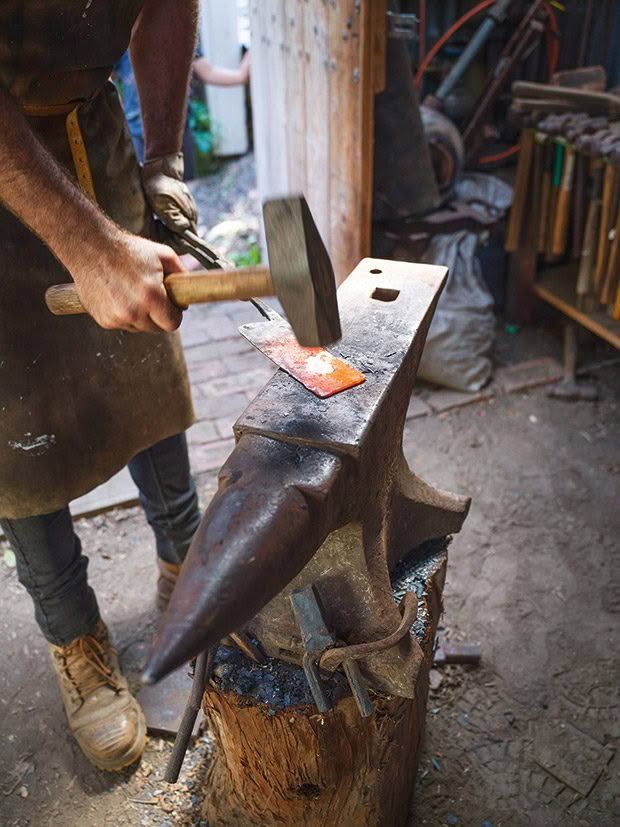
Will forges a kitchen cleaver.
“I forge the shape of the blade as close as possible to the finished piece to avoid too much grinding,” he explains. “Carbon steel holds a better edge than stainless steel and is easy to sharpen with either a whetstone or steel.
“There’s a Japanese influence on my knives. The handles and the blades are from recycled materials such as hardwood or bone. I get antlers from local hunters.”
Will’s hand-made knives range from $200 to $400, and come in size and shape from a full-sized chef’s knife to small cleavers and vegetable choppers. Getting the shape and function right is crucial; they are designed as heirlooms to be passed down through generations.
Love this story? Subscribe now!
 This article first appeared in NZ Life & Leisure Magazine.
This article first appeared in NZ Life & Leisure Magazine.
